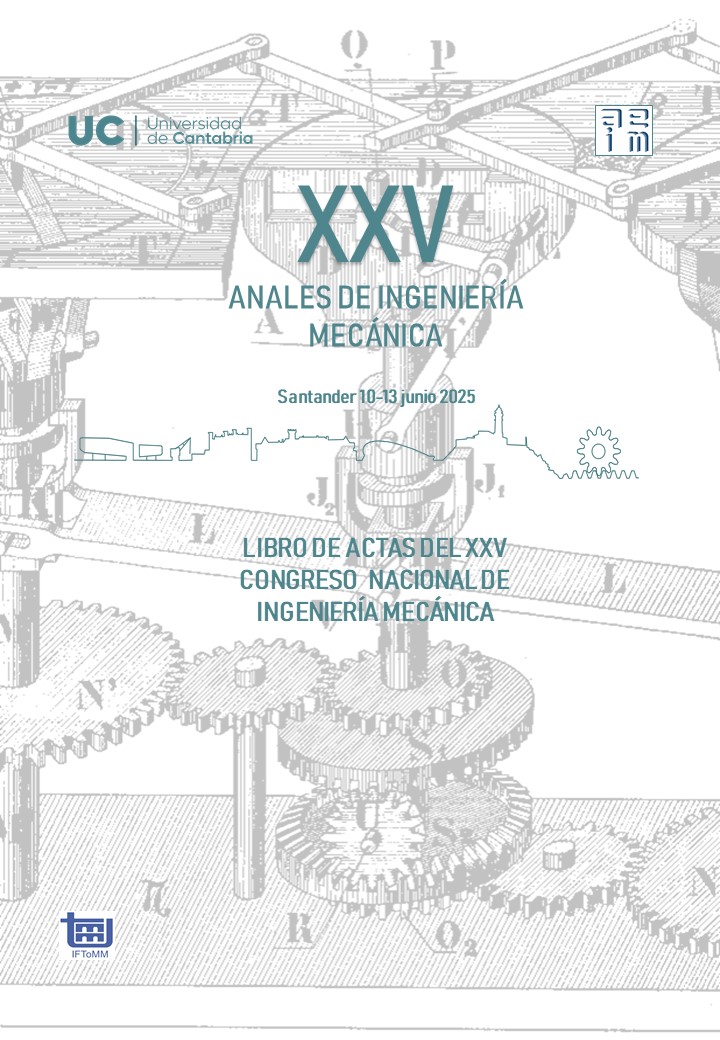Simulaciones músculo-esqueléticas de la secuencia de pedaleo de ciclistas
Contenido principal del artículo
Resumen
Los estudios biomecánicos en el ciclismo se han vuelto una herramienta esencial para optimizar el pedaleo del ciclista para maximizar la transferencia de la energía generada por el sujeto en energía mecánica. Un pedaleo sub-óptimo además de reducir el rendimiento puede generar diferentes lesiones en el ciclista.
Este trabajo presenta simulaciones músculo-esqueléticas para analizar la influencia músculo-esquelética durante la fase de pedaleo de un ciclista. Estas simulaciones se realizan con el software OpenSim, utilizando la cinemática y dinámica inversa. De este modo el monitorizado de las posiciones articulares del sujeto y la fuerza generada durante toda la fase de pedaleo es necesaria.
Las técnicas de visión artificial han experimentado un notable crecimiento en los últimos años, y basándose en métodos de inteligencia artificial, la detección de la pose humana ha sido altamente perfeccionada. Por ello, se utiliza un software libre de detección de la pose humana sin la necesidad de utilizar marcadores en las articulaciones del sujeto. Además, se utilizan 2 cámaras que se calibran y sincronizan para poder obtener las posiciones de los marcadores en 3 dimensiones.
Por otro lado, se han sensorizado las bielas del pedal con galgas extensiométricas para poder medir las deformaciones sufridas por la biela. De este modo se obtiene el momento generado por el ciclista durante toda la fase del pedaleo. También, se han tenido que sincronizar las grabaciones de vídeo con las adquisiciones de las señales generadas por las galgas extensiométricas.
Finalmente, con el uso de todos los datos experimentales se han realizado las simulaciones músculo-esqueléticas para determinar la influencia de la musculatura del ciclista durante la fase de pedaleo. Además, se ha estudiado la influencia que tiene un pedaleo no optimo en la activación de los diferentes músculos que participan en un ciclo completo de pedaleo.
Detalles del artículo

Esta obra está bajo una licencia internacional Creative Commons Atribución-NoComercial-CompartirIgual 4.0.
CC BY-NC-SA 4.0)
El lector puede compartir, copiar y redistribuir el material en cualquier medio o formato, siempre y cuando cumpla con las siguientes condiciones:
-
Atribución (BY): Debe dar crédito adecuado al autor original, proporcionando un enlace a la licencia y señalando si se han realizado cambios.
-
No Comercial (NC): No puede utilizar el material con fines comerciales. Esto significa que no puede venderlo ni obtener ganancias directas de su uso.
-
Compartir Igual (SA): Si adapta, transforma o construye sobre el material, debe distribuir sus contribuciones bajo la misma licencia que el original.
Recuerda que esta licencia no afecta los derechos legales del autor, como el derecho moral o las excepciones de uso justo.
Citas
Priego Quesada J.I., Pérez-Soriano P., Lucas-Cuevas A.G., Salvador Palmer R., Cibrián Ortiz de Anda R.M., "Effect of bike-fit in the perception of comfort, fatigue and pain", Journal of Sports Sciences 35, 1459–1465 (2017)
Bini R.R., Hume P., "A Comparison of Static and Dynamic Measures of Lower Limb Joint Angles in Cycling: Application to Bicycle Fitting", Human Movement 17, 36–42 (2016).
Ferrer-Roca V., Roig A., Galilea P., García-López J., "STATIC VERSUS DYNMIC EVALUATION IN BIKE FITTING: INFLUENCE OF SADDLE HEIGHT ON LOWER LIMB KINEMATICS",Biomechanics in Sports 29 Portuguese Journal of Sport Sciences, 11, (2011)
Bini R., Daly L., Kingsley M., "Changes in body position on the bike during seated sprint cycling: Applications to bike fitting", European Journal of Sport Science 20, 35–42 (2020)
Swart, J., & Holliday, W., “Cycling biomechanics optimization—The (R) evolution of bicycle fitting.” Current Sports Medicine Reports, 18 (12), 490–496. (2019)
Malus, J., Skypala, J., Silvernail, J. F., Uchytil, J., Hamill, J., Barot, T., & Jandacka, D., “Marker placement reliability and objectivity for biomechanical cohort study: Healthy aging in industrial environment (HAIE—Program 4)”, Sensors, 21(5), Article 1830, (2021)
Kim, W. et al., “Ergonomic postural assessment using a new open-source human pose estimation technology (OpenPose)” International Journal of Industrial Ergonomics 84, 103164 (2021)
Cao Z., Hidalgo G., Simon T., Wei S.-E., Sheikh Y., "OpenPose: Realtime Multi-Person 2D Pose Estimation Using Part Affinity Fields", IEEE Transactions on Pattern Analysis and Machine Intelligence 43, 172–186 (2021)
Bini, R. R., Serrancoli, G., Santiago, P. R. P., Pinto, A., & Moura, F., “Validity of Neural Networks to Determine Body Position on the Bicycle”, Research Quarterly for Exercise and Sport, 94(4), 905–912, (2022)
Kim, J.-W.; Choi, J.-Y.; Ha, E.-J.; Choi, J.-H., “Human Pose Estimation Using MediaPipe Pose and Optimization Method Based on a Humanoid Model”, Applied Science, 13, 2700, (2023)
S. Mroz et al., "Comparing the Quality of Human Pose Estimation with BlazePose or OpenPose," 4th International Conference on Bio-Engineering for Smart Technologies (BioSMART), 1-4, Paris, (2021)
G. Serrancolí et al., "Marker-Less Monitoring Protocol to Analyze Biomechanical Joint Metrics During Pedaling,", IEEE Access, 8, 122782-122790, (2020)
Pagnon, D.; Domalain, M.; Reveret, L. “Pose2Sim: An End-to-End Workflow for 3D Markerless Sports Kinematics—Part 1: Robustness”, Sensors, 21, 6530, (2021)
Delp, S. L. et al., OpenSim: “Open-source software to create and analyze dynamic simulations of movement”, IEEE Transactions on Biomedical Engineering, 54(11), 1940-1950. (2007)
Mahadas, S., Mahadas, K., Hung, G.K., “Biomechanics of the golf swing using OpenSim”, Computers in Biology and Medicine, 105, 39-45, (2019)
Clancy, C.E., Gatti, A.A., Ong, C.F. et al., “Muscle-driven simulations and experimental data of cycling”, Scientific Reports, 13, 21534, (2023)
X. Jiang and I. Bíró, "Muscle force estimation in running gait analysis after a prolonged running session via OpenSim," 4th International Conference on Computer Engineering and Application (ICCEA), China, 498-502, (2023)
Uhlrich S. D., Falisse A., Kidziński Ł., Muccini J., Ko M., et al., “OpenCap: Human movement dynamics from smartphone videos”, PLOS Computational Biology, 19 (10), (2023)
Dias Scoz R. et al., "Effectiveness of a 3D bikefitting method in riding pain, fatigue, and comfort: a randomized controlled clinical trial", Sports Biomechanics, 1–14, (2022).
Scoz R.D., et al., "Long-Term Effects of a Kinematic Bikefitting Method on Pain, Comfort, and Fatigue: A Prospective Cohort Study", International Journal of Environmental Research and Public Health, 19, (2022).

